Reviews: Memoirs from Lou Dawson, Peter Chrzanowski; ISHA-Award films
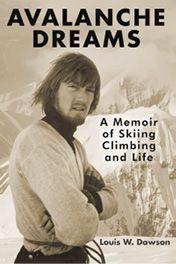
Avalanche Dreams, by Lou Dawson
Lou Dawson is a hero to Colorado’s backcountry skiers, as the first person to ski from all 54 of the state’s 14,000-foot peaks, including a number of first descents, and author of the best guidebooks to ski mountaineering in the state. He’s also the author of the American Alpine Club’s formal history of ski mountaineering, Wild Snow, and the founder of the respected website of the same name (which he has since sold).
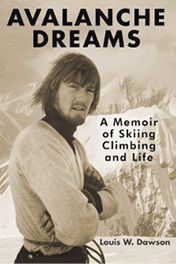
Avalanche Dreams is a soulful coming-of-age memoir. The child of a hippie couple, Dawson grew up semi-feral in the Texas hills, and then in Aspen and the Elk Mountains. His father, Craig, was a ne’er-do-well who built, with his own hands, several homes for his growing family but was forced to sell all of them. In the late 1960s, the Dawson house, on Highway 82 east of town, became a headquarters of Aspen’s drug culture and even of Hunter Thompson’s campaign for sheriff.
At least Craig Dawson instilled in his oldest kid a passionate devotion to mountain adventure. The real father figure in Lou Dawson’s early life was Paul Petzoldt, founder of the National Outdoor Leadership School (NOLS). As a teen, Dawson himself became a NOLS instructor, and then—by surviving a series of near-death experiences--one of North America’s best rock climbers. It was an era of rapid technical progress in climbing, and Dawson was in the thick of it in Colorado, Wyoming, Yosemite and Alaska, partnering with legendary climbers like Harvey Carter, Don Peterson and Michael Kennedy.
Death by hypothermia or a misplaced step was always a possibility for a risk-addicted climber, but as Dawson shifted into ice climbing and ski-equipped winter mountaineering, the recurring horror was avalanche. He lost friends under the snow, including Meta Paumgarten Burden in 1970. Then he twice nearly died in the snow, each time rescued in the nick of time and with a shattered leg. It took three harrowing attempts over four winters to complete, in 1982, the first midwinter traverse of the Elk Mountains.
Parallel to the mountaineer’s progress, Dawson struggled to find his way from the chaos of his early family life to acceptance of a stable relationship. That came in 1984, when he met Lisa Spieler, the Americanized daughter of Swiss mountaineers. They married within a year, and Dawson chose to temper risk for the sake of marriage—as he writes, he learned finally to “live by the mountain’s rules.”
Beginning in 1987, Dawson set out to ski all the Fourteeners, completing the project in the spring of 1990 at age 38 and just in time for the birth of his son, Louie. More adventures followed, some of them partnered with Lisa and Louie. In 2010, 20-year-old Louie helped his old man summit and ski Denali in winter.
Dawson has become a graceful, even lyrical, writer. Of mastering wild-snow skiing, he writes “I thought about steeps—why they’re special. Halfway between the vertical and the horizontal, a line bisects the world. On one side, gravity rules. On the other side, forty-five degrees and beyond, when you spring off the snow during a turn, for a moment, you fly, weightless. Beyond the challenge, beyond the athleticism, steep skiing was about wings.” –Seth Masia
Best Peak Press, 2024. 371 pages with 82 black & white photos. $25 hardcover, $18 paperback, $10 Kindle edition.
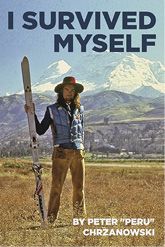
I Survived Myself, by Peter Chrzanowski
I Survived Myself might seem like a curious title for a book about ski mountaineering and paragliding, yet the stunning array of accidents that Canadian author Peter Chrzanowski has experienced over the past 50 years indeed makes his continued existence somewhat miraculous. The book is 400 pages long, and there are bumps, bruises and blood in every chapter.
In the early 1980s, Chrzanowski was a pioneer of extreme skiing. Before arriving in Whistler, British Columbia, in 1982, he undertook a pair of expeditions to Huascaran and Ranrapalca in the Andes, earning the nickname “Peter Peru.” In Ranrapalca, he barely survived after cartwheeling down a couloir and falling into a crevasse.
At a time when other ski mountaineers were muddling through three-week ski traverses on telemark gear, Chrzanowski and his rowdy (and inexperienced) posse used helicopters to reach impressive summits in the Sea to Sky Corridor. Almost immediately, things started to go wrong. In 1979, Chrzanowski organized a heli-assisted descent of the West Couloir of Wedge Mountain. Team member Gerhard Singler died when a cornice collapsed at the top of the route. This misadventure didn’t stop Chrzanowski from creating an informal business, Extreme Explorations, which specialized in taking thrill-seeking tourists into Whistler’s gnarliest terrain, both in and out of bounds.
Thus began a 40-year odyssey in which mishaps pile up like rubble at the bottom of an avalanche chute. What kept Chrzanowski going was chutzpah; by the mid-1980s, he’d released a series of films featuring major peaks such as Mount Waddington and was relentless in his pursuit of sponsorship and financing to bring his projects to fruition. Chrzanowski managed to attract young, strong and photogenic skiers like Steve Smaridge, Jia Condon, Ptor Spricenieks, Troy Jungen, Eric Pehota and Trevor Petersen—several of whom later moved on to bigger roles with better film companies.
Chrzanowski’s biggest break came when he was invited to both film and judge the very first World Extreme Skiing Championships in Valdez, Alaska, a gig he then held for more than a decade. His luck took a turn for the worse following a damning story in Powder Magazine titled “Curse of the Traverse.” In 1995, Chrzanowski plotted a multi-day “team traverse” race across the Pemberton Icecap glacier system in the Coast Range. Several teams got lost and Chrzanowski broke his leg when he fell off the back of a snowmobile while filming. A search-and-rescue team was deployed to find missing racers and volunteers.
In the early 2000s, Chrzanowski decided that extreme skiing no longer provided big thrills. He took up paragliding, moving to Pemberton, where he joined the ragtag Flying Monkeys. Thus began a two-decade transition away from ski filmmaking and a new notoriety, not just in Canada but also in Mexico and Colombia.
Then there are the (apparently) dozens of liaisons with beautiful women in Poland, France, Chile, Colombia—pretty much everywhere he travels. Alas, finding a soul mate and continuing the family name— Chrzanowski is an only child—does not seem to be in the cards for him.
As with many self-published efforts, I Survived Myself contains many formatting, spelling and grammatical errors, and is about a hundred pages too long. There has never been a ski bum/filmmaker/paraglider quite as renegade as Peter Chrzanowski, and a much better book could have been written about his many highs and lows. But I Survived Myself is still a fascinating, and often cringe-worthy account, of one man and his relationship to the mountains. The title could not have been more appropriate. –Steve Threndyle
ISHA Film Awards
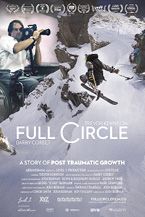
Full Circle: A Story of Post-Traumatic Growth
By Barry Corbet and Trevor Kennison
Directed by Josh Berman, music by Mark Crawford
Faced with a traumatic injury that renders you permanently disabled, how would you reinvent yourself? In 2014, Trevor Kennison’s life was forever altered by a broken back—for worse and for better, in equal measures. Barry Corbet, an intrepid skier, mountaineer, explorer, filmmaker and Jackson Hole legend, broke his back in a helicopter crash in 1968. Frustrated by a pre-ADA culture that did not accept or support the disabled, Corbet reinvented himself, becoming a seminal leader in the disability community. Full Circle follows Kennison on a path toward post-traumatic growth in parallel with Corbet, 50 years later. Their stories mirror each other, connected through time and space by common locations and motifs—injuries in the Colorado backcountry, rehab at Denver's Craig Hospital, fame in Jackson Hole—but also, through their shared resiliency and refusal to let their passion for life be limited by their injuries. Full Circle is both an unblinking examination of the challenges of spinal cord injury and a celebration of the growth that such tragedy can catalyze.
Streaming on Netflix, 104 minutes.
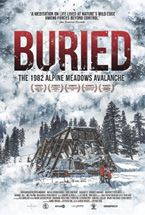
Buried: The 1982 Alpine Meadows Avalanche
Jared Drake and Steven Siig
In the early 1980s, Alpine Meadows ski patrollers were the gods of winter in Lake Tahoe, California, a sun-drenched wonderland of endless powder and parties. This sundry crew full of youthful hubris and a zest for explosives was guided by a newly minted avalanche forecaster named Jim Plehn. More thoughtful and strategic than the others, Plehn was a stickler for safety and protocol; he had to be at this avalanche-prone resort. The responsibility to keep the skiing public safe was an all-consuming obsession of the patrol crew, which made the day of March 31, 1982, all the more devastating.
With the ski area closed due to high avalanche danger, an avalanche of unforeseeable magnitude broke free. Millions of pounds of snow hurtled down the side of the mountain, demolishing the resort’s base area and burying the parking lot. The shell-shocked patrol team dug into the wreckage. Eight victims were buried in the slide—co-workers, friends, family—and every passing second was precious.
Over the next five days, through an unrelenting storm and unimaginable tragedy, the rescue team persevered. Innocence was lost, mortality faced, Mother Nature reckoned with, but through it all they never gave up hope for a miracle.
Streaming on Netflix, Prime and Apple TV, 90 minutes.
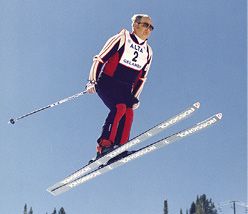
Alf Engen: Snapshots of a Sports Icon
Alan and Barbara Engen
An affectionate biography of Alta legend Alf Engen. 
Alf Engen Ski Museum, 38 minutes. Streaming at vimeo.com/906432480